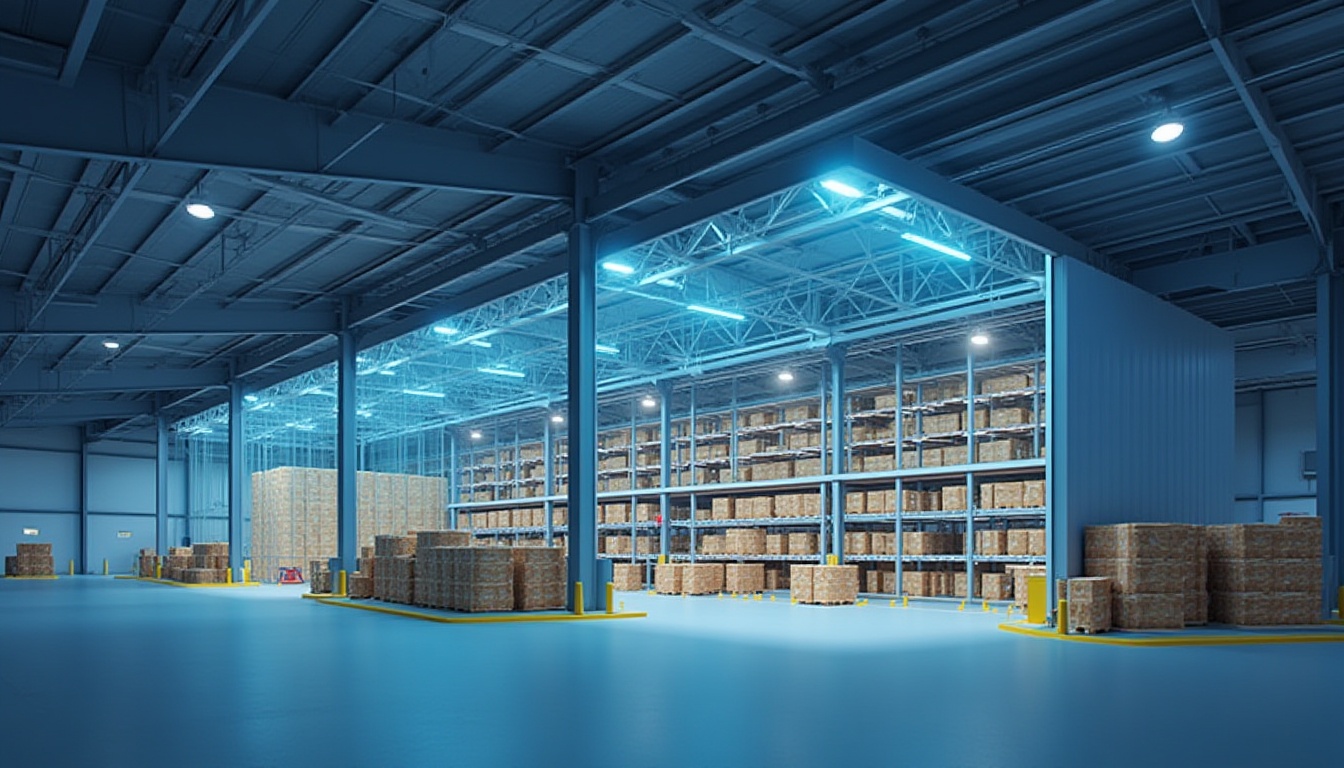In the high-stakes world of the Food & Beverage industry, the warehouse is more than just a storage space—it's the critical link between production and the consumer. For decades, warehouse design followed a simple principle: maximize pallet locations and minimize travel time. But in an era of e-commerce, complex cold chains, and stringent safety regulations, this traditional approach is no longer enough. Enter digital transformation, a powerful force that is fundamentally reshaping the very blueprint of food storage facilities.
The integration of technologies like the Internet of Things (IoT), Artificial Intelligence (AI), and advanced robotics is not just an upgrade to existing operations; it's a complete overhaul of warehouse layout and design in food storage. Let's explore how this digital shift is creating smarter, safer, and more efficient warehouses.
Traditional warehouses are static. Racks are fixed, and product placement is often based on historical data or rough estimates. Digital transformation changes this by introducing a dynamic, data-driven approach.
- IoT Sensors for Real-Time Monitoring: Sensors placed throughout the facility monitor temperature, humidity, and product levels in real-time. This data doesn't just alert managers to problems; it informs the actual warehouse layout and design in food storage. For instance, high-value or sensitive items can be automatically assigned to the most stable climate zones, and layout can be adjusted to minimize the time perishable goods spend in transitional areas.
- AI-Powered Slotting Optimization: AI algorithms analyze sales velocity, expiration dates (FIFO/FEFO), and seasonal trends to determine the optimal location for every single SKU. Instead of a worker deciding where to put a new pallet of frozen pizza, the Warehouse Management System (WMS) directs them to the exact spot that minimizes picking time and ensures perfect stock rotation.
The classic warehouse design featured wide aisles to accommodate forklifts. The digital warehouse is a shared space, leading to new architectural considerations.
- Collaborative Robotics (Cobots): Cobots can work alongside humans in narrower aisles, as they don't require the same safety space as large forklifts. This allows for a higher density of storage racks, increasing overall storage capacity without expanding the building's footprint.
- Automated Guided Vehicles (AGVs) and AMRs: These self-navigating units follow optimized, pre-determined paths. This means the layout can be designed with specific "highways" for robots, separating them from human traffic to improve both safety and efficiency. The focus shifts from designing for vehicle maneuverability to designing for seamless data flow and robotic navigation.
Digital tools enable a more zoned and specialized approach to warehouse design.
- Smart Value-Added Services (VAS) Zones: Areas for labeling, kitting, or final assembly are now equipped with digital workstations. Barcode scanners and AR smart glasses guide workers through processes, reducing errors and speeding up custom orders. The layout of these zones is optimized for flexibility and quick reconfiguration based on real-time order data.
- Micro-Fulfillment Centers (MFCs): Driven by the demand for rapid grocery delivery, MFCs are small, highly automated warehouses located in urban areas. Their entire layout is built around vertical lift modules (VLMs) and robotic picking arms, maximizing every cubic inch of space. This model would be impossible without the digital systems that control the dense, automated storage and retrieval processes.
In food storage, safety is paramount. Digital transformation builds safety directly into the warehouse blueprint.
- Predictive Maintenance Zones: By analyzing data from equipment sensors, AI can predict when a freezer unit or conveyor belt is likely to fail. This allows for maintenance to be scheduled proactively, preventing catastrophic temperature excursions that could spoil entire inventories. The layout may include dedicated, easily accessible areas for maintaining this smart equipment.
- Blockchain for Traceability: While not a physical layout change, the need for seamless traceability influences design. Areas for scanning and logging products at every touchpoint (receiving, storage, picking, shipping) become critical control points integrated into the workflow, ensuring a flawless digital chain of custody.
The impact of digital transformation on warehouse operations is profound, but its influence on physical layout and design is even more revolutionary. We are moving away from generic storage sheds and toward intelligent, adaptive ecosystems. The modern food warehouse is a living system that responds to data, optimizes itself in real-time, and prioritizes both product integrity and operational agility.
